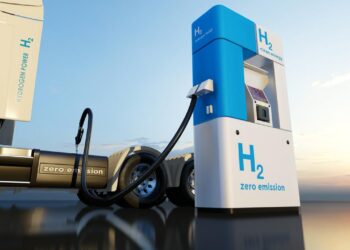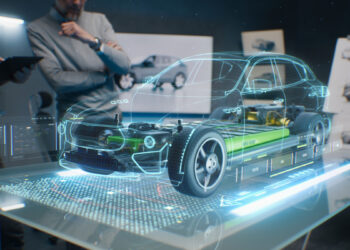The automotive industry, long a symbol of progress and personal freedom, is now at a critical juncture, driven by an urgent global imperative: sustainability. What was once an optional feature or a niche market is rapidly becoming the central guiding principle for vehicle design, manufacturing, and operation. This isn’t just about reducing tailpipe emissions; it’s a holistic rethinking of the entire automotive lifecycle, from raw material sourcing to end-of-life recycling. The surge in sustainable automotive innovations signals a profound commitment to a greener future, addressing climate change, resource depletion, and urban pollution head-on. This isn’t merely an upgrade to existing models; it’s a complete reimagining of mobility, ensuring that our desire for transportation aligns with the health of our planet.
Why Sustainability is Non-Negotiable

The shift towards sustainable automotive innovations isn’t a fad; it’s a necessity born from pressing environmental and societal challenges. Understanding these drivers is key to appreciating the depth and breadth of the industry’s transformation.
A. Climate Change and Carbon Footprint
The undeniable reality of climate change places immense pressure on industries, with transportation being a significant contributor to greenhouse gas emissions.
- Decarbonization Goals: Governments and international bodies worldwide are setting ambitious targets for reducing carbon emissions, often aiming for net-zero by mid-century. The automotive sector must play a pivotal role in achieving these goals.
- Greenhouse Gas Emissions: Traditional internal combustion engine (ICE) vehicles release large quantities of carbon dioxide (), methane (), and nitrous oxide (), which contribute to global warming. Sustainable innovations seek to drastically cut these emissions.
- Carbon Neutrality Targets for Manufacturers: Many leading automakers have committed to making their entire operations carbon neutral, from manufacturing plants to supply chains, signaling a comprehensive approach to sustainability.
- Compliance and Regulation: Increasingly stringent emissions standards and fuel economy regulations force manufacturers to innovate or face penalties, making sustainable practices a business imperative.
Addressing the carbon footprint of vehicles is the foundational pillar of sustainable automotive innovation.
B. Resource Scarcity and Circular Economy
The traditional linear “take-make-dispose” model is unsustainable in a world with finite resources. Automotive innovation is moving towards a circular economy.
- Depletion of Raw Materials: The mining of essential materials like lithium, cobalt, nickel, and rare earth elements, vital for batteries and electronics, faces concerns about scarcity and environmental impact.
- Waste Reduction: End-of-life vehicles contribute to massive waste streams. Sustainable innovation focuses on designing for disassembly, reuse, and recycling of components.
- Energy Consumption in Manufacturing: The production of vehicles is energy-intensive. Innovations aim to reduce energy consumption and transition to renewable energy sources in manufacturing facilities.
- Water Usage: Vehicle manufacturing requires significant amounts of water. Sustainable practices seek to minimize water consumption and improve wastewater treatment.
- Pollution from Production: Manufacturing processes can generate pollutants. Sustainable innovations implement cleaner production technologies and reduce hazardous waste.
The shift to a circular economy model ensures that resources are utilized efficiently and waste is minimized across the entire automotive value chain.
C. Air Quality and Public Health
Beyond global warming, local air pollution from vehicle emissions directly impacts human health, particularly in urban areas.
- Respiratory Illnesses: Particulate matter (), nitrogen oxides (), and volatile organic compounds (VOCs) from vehicle exhaust are linked to asthma, bronchitis, and other respiratory diseases.
- Urban Smog: These pollutants contribute to the formation of ground-level ozone, a major component of smog, which harms both human health and ecosystems.
- Noise Pollution: The noise from traditional vehicles significantly impacts urban residents, leading to stress, sleep disturbances, and other health issues. Electric and quieter vehicles offer a significant improvement.
- Local Environmental Degradation: Emissions can contribute to acid rain and harm local biodiversity.
Sustainable automotive innovations prioritize zero or ultra-low tailpipe emissions and quieter operation to create healthier, more livable cities.
D. Evolving Consumer Expectations and Brand Image
Modern consumers are increasingly conscious of environmental issues and are willing to support brands that align with their values.
- Eco-Conscious Consumers: A growing segment of buyers actively seeks environmentally friendly products, including vehicles, influencing purchasing decisions.
- Brand Reputation: Companies committed to sustainability often enjoy enhanced brand image, customer loyalty, and a positive public perception.
- Transparency and Accountability: Consumers demand greater transparency regarding environmental impact and ethical practices throughout the supply chain.
- Investment Community Pressure: Investors are increasingly considering Environmental, Social, and Governance (ESG) factors, pressuring companies to adopt sustainable practices.
- Long-Term Value Proposition: Sustainable vehicles often offer lower running costs (e.g., electricity cheaper than gasoline, less maintenance) and potential for higher resale value, appealing to financially savvy buyers.
Sustainability is no longer just a regulatory burden; it’s a strategic advantage and a key differentiator in a competitive market.
Pillars of Sustainable Automotive Innovations

The push for sustainability manifests across every aspect of vehicle design, manufacturing, and operation, driven by a holistic approach.
A. Electrification of Powertrains
The most significant and visible shift towards sustainability is the widespread adoption of electric vehicles (EVs).
- Battery Electric Vehicles (BEVs): Offering zero tailpipe emissions and powered solely by electricity, BEVs are at the forefront of this revolution. Innovations in battery technology (higher energy density, faster charging, lower cost) are making them increasingly practical.
- Plug-in Hybrid Electric Vehicles (PHEVs): Combining a smaller ICE with a larger battery that can be externally charged, PHEVs offer significant electric-only range for daily commutes and gasoline backup for longer trips, reducing overall emissions.
- Hybrid Electric Vehicles (HEVs): These blend gasoline and electric power, with the battery charged through regenerative braking and the engine. They offer improved fuel efficiency and lower emissions than traditional ICE cars without needing external charging.
- Fuel Cell Electric Vehicles (FCEVs): Powered by hydrogen, FCEVs produce only water vapor as emissions, offering fast refueling times and long ranges. While still nascent for passenger cars, they hold significant long-term potential, especially for heavy-duty transport.
- Optimized Powertrain Integration: Sophisticated software and hardware ensure seamless transition and efficient operation between electric motors and internal combustion engines where applicable.
Electrification is the cornerstone of emission reduction in the use phase of vehicles.
B. Lightweighting and Material Innovation
Reducing vehicle weight directly improves efficiency and performance, regardless of the powertrain type. This drives innovation in materials science.
- Advanced High-Strength Steel (AHSS): Lighter and stronger than traditional steel, allowing for thinner components without compromising safety.
- Aluminum Alloys: Widely used for body panels, chassis components, and engine parts due to their low weight and excellent strength-to-weight ratio.
- Carbon Fiber Reinforced Polymers (CFRP): Extremely lightweight and strong, often used in high-performance or specialized applications, now increasingly finding its way into mainstream vehicles.
- Magnesium Alloys: Even lighter than aluminum, used for specific components where weight savings are critical.
- Biocomposites and Natural Fibers: Research into sustainable alternatives like flax, hemp, or even cellulose-based materials for interior trims and non-structural components.
- Multi-Material Architectures: Combining different materials strategically throughout the vehicle to optimize weight, strength, and cost.
Lightweighting reduces energy consumption, whether from gasoline or electricity, contributing to overall sustainability.
C. Circular Economy and Lifecycle Management
Moving beyond just vehicle operation, sustainable innovation considers the entire lifespan of a vehicle.
- Design for Disassembly: Vehicles are engineered from the outset to be easily disassembled at the end of their life, facilitating material recovery.
- Increased Recycled Content: Utilizing recycled plastics, metals, and other materials in new vehicle production, reducing the demand for virgin resources.
- Battery Recycling and Reuse: Developing robust processes for recycling valuable materials from EV batteries and exploring “second-life” applications for used batteries (e.g., stationary energy storage).
- Remanufacturing and Refurbishment: Reconditioning components or entire systems to extend their lifespan, reducing the need for new parts.
- Sustainable Sourcing: Ensuring that raw materials are sourced ethically, responsibly, and with minimal environmental impact. This includes due diligence in mining operations.
- Closed-Loop Systems: Creating systems where materials are continuously reused and recycled within the automotive industry, minimizing waste sent to landfills.
A truly sustainable automotive industry embraces principles of longevity, reuse, and recycling.
D. Eco-Friendly Manufacturing Processes
The production of vehicles is undergoing a transformation to reduce its environmental footprint.
- Renewable Energy in Factories: Shifting manufacturing plants to be powered by renewable energy sources (solar, wind, geothermal) to reduce operational emissions.
- Water Conservation: Implementing advanced water recycling systems, rainwater harvesting, and efficient cooling processes to minimize water consumption.
- Waste Reduction and Management: Strict waste segregation, recycling programs, and innovative methods to reduce industrial waste sent to landfills.
- Reduced VOC Emissions: Implementing cleaner painting processes and using water-based paints to cut down on volatile organic compound emissions.
- Energy Efficiency in Production: Optimizing production lines, using energy-efficient machinery, and implementing smart energy management systems.
- Sustainable Logistics: Optimizing supply chain routes and using more efficient transport modes to reduce the environmental impact of component delivery.
Sustainable manufacturing is crucial for a truly green automotive product.
E. Smart Mobility and Connectivity
Beyond the vehicle itself, intelligent systems and shared services contribute to a more sustainable transportation ecosystem.
- Mobility-as-a-Service (MaaS): Integrating various transport options (public transit, ride-sharing, bike-sharing, e-scooters) into a single platform to encourage multi-modal travel and reduce private car ownership.
- Autonomous Vehicles (AVs): The potential for optimized routing, platooning, and higher vehicle utilization in autonomous fleets could drastically reduce congestion and energy consumption.
- Connected Vehicle Technology (V2X): Vehicle-to-Everything communication allows vehicles to share data with each other and infrastructure, improving traffic flow, enhancing safety, and optimizing energy use.
- Data Analytics for Optimization: Using big data to analyze traffic patterns, predict demand, and optimize routes for individual vehicles and entire fleets.
- Shared Mobility Services: Car-sharing, ride-sharing, and bike-sharing programs reduce the number of vehicles on the road, decreasing emissions and parking demand.
- Intelligent Traffic Management: Systems that dynamically adjust traffic signals and routes based on real-time conditions to reduce idling and improve flow.
Smart mobility solutions aim to make the entire transportation system more efficient and sustainable.
The Broader Impact for Society and Economy
The integration of sustainable automotive innovations will have far-reaching consequences beyond just the industry itself.
A. Urban Transformation
Cities are set to undergo significant changes as sustainable mobility solutions become mainstream.
- Cleaner Air and Quieter Streets: A dramatic reduction in noise and air pollution, making urban environments more pleasant and healthier for residents.
- Reduced Congestion: More efficient traffic flow and increased use of public/shared transport can alleviate traffic jams.
- Repurposed Space: Less need for extensive parking lots could free up valuable urban land for green spaces, housing, or pedestrian zones.
- Enhanced Walkability and Bikeability: Cities will become more pedestrian and cyclist-friendly, promoting active transportation.
- Decentralization Potential: Improved, efficient mobility might allow populations to disperse more evenly, reducing pressure on dense city centers.
Future cities will be designed for people, with sustainable mobility at their core.
B. Economic Opportunities and Job Creation
The shift to sustainable automotive practices will create new industries and redefine existing ones.
- Green Manufacturing Jobs: Growth in jobs related to battery production, EV assembly, and renewable energy integration in factories.
- Recycling and Raw Material Recovery: Emergence of a robust industry for battery recycling and material reclamation.
- Software and AI Development: Increased demand for engineers and developers in areas like autonomous driving, smart traffic management, and data analytics.
- Charging Infrastructure Development: Significant investment and job creation in building and maintaining EV charging networks.
- New Business Models: Growth of mobility service providers, energy management companies, and specialized consultants for sustainable transport.
- Innovation Ecosystems: Development of research hubs and startups focused on sustainable automotive technologies.
While some traditional roles may evolve, the green transition is a net job creator in many sectors.
C. Social Equity and Accessibility
Sustainable mobility can foster more inclusive societies by improving access for all.
- Enhanced Mobility for All: Electric and shared mobility options provide greater access to transportation for the elderly, individuals with disabilities, and those without private vehicle ownership.
- Reduced Transportation Costs: For many, shared electric mobility solutions can be more affordable than owning and maintaining a traditional car, alleviating financial burden.
- Improved Public Health: Cleaner air and quieter environments contribute to better health outcomes for urban populations, particularly in disadvantaged communities often disproportionately affected by pollution.
- Increased Productivity: Reduced commuting times and stress can free up time for productive activities or leisure.
- Safer Roads: Autonomous technology, combined with better infrastructure, promises fewer accidents, leading to safer communities.
Sustainable mobility has the potential to democratize transportation and improve quality of life across socio-economic strata.
D. Energy Grid Transformation
The widespread adoption of EVs and sustainable energy in manufacturing will deeply integrate the automotive sector with the energy grid.
- Grid Stability: EV batteries can act as distributed energy storage, helping to balance the grid by charging during off-peak hours and potentially returning energy (V2G) during peak demand.
- Renewable Energy Integration: Increased demand for clean electricity for charging vehicles will accelerate investment in renewable energy generation.
- Smart Charging: Intelligent charging systems will optimize charging times to align with renewable energy availability and grid demand.
- Resilient Infrastructure: The need for a more robust and decentralized energy grid to support large-scale electrification.
The future of energy and transportation are inextricably linked, with sustainable automotive innovations driving grid modernization.
The Road Ahead
While significant progress has been made, the journey to a fully sustainable automotive industry is ongoing and requires continuous effort and collaboration.
A. Policy and Regulatory Alignment
Governments must play a proactive role in setting the framework for sustainable innovation.
- Clear Emission Targets: Setting ambitious but achievable emissions reduction targets for vehicles and manufacturing.
- Incentives for Green Tech: Offering tax breaks, subsidies, and grants for the adoption of EVs, sustainable manufacturing, and R&D in green materials.
- Standardization: Developing global standards for battery recycling, charging infrastructure, and sustainable material definitions.
- Investment in Infrastructure: Funding and facilitating the build-out of renewable energy grids, charging networks, and smart urban infrastructure.
- Support for Circular Economy: Implementing policies that encourage design for disassembly, remanufacturing, and increased recycled content.
- Inter-Agency Collaboration: Ensuring that transport, energy, and environmental policies are coordinated and mutually reinforcing.
Robust and consistent policy is the bedrock of rapid transition.
B. Continued Research and Development
Innovation in battery technology, advanced materials, and manufacturing processes must accelerate.
- Next-Generation Batteries: Intensive R&D into solid-state batteries, sodium-ion, and other chemistries for even higher energy density, faster charging, and lower cost.
- Advanced Recycling Technologies: Developing more efficient and economically viable methods for recovering critical materials from end-of-life batteries and other vehicle components.
- Bio-Based and Sustainable Materials: Continued exploration and scaling of materials derived from renewable sources with minimal environmental impact.
- AI and Machine Learning: Further integration of AI for optimizing vehicle performance, manufacturing processes, and smart mobility solutions.
- Hydrogen Production and Infrastructure: Investing in green hydrogen production methods and the necessary refueling infrastructure to support FCEVs.
The pace of technological discovery will define the speed of the sustainable transition.
C. Industry Collaboration and Partnerships
Addressing complex sustainability challenges requires collective effort across the entire value chain.
- Cross-Industry Alliances: Collaborations between automakers, energy companies, technology firms, and logistics providers to create integrated sustainable solutions.
- Supply Chain Transparency: Working with suppliers to ensure ethical sourcing and sustainable practices throughout the entire value chain.
- Open Standards: Promoting open standards for data sharing, charging protocols, and material specifications to foster interoperability and innovation.
- Shared Infrastructure Development: Joint investments in charging networks, battery recycling facilities, and other shared resources.
- Knowledge Sharing: Collaborating on research, best practices, and lessons learned to accelerate progress.
No single entity can achieve full sustainability alone; collaboration is key.
D. Consumer Education and Acceptance
Shifting consumer behavior and building trust in new technologies are vital for widespread adoption.
- Dispelling Misconceptions: Educating the public about the benefits, capabilities, and safety of EVs and other sustainable mobility options.
- Promoting Total Cost of Ownership: Highlighting the long-term financial benefits of sustainable vehicles (lower fuel costs, less maintenance) over upfront price.
- Showcasing Diverse Offerings: Demonstrating the wide range of sustainable vehicle options available across different segments and price points.
- Incentivizing Behavior Change: Encouraging the use of public transport, shared mobility, and active transport through targeted programs and infrastructure improvements.
- Building Trust in Autonomy: Transparent communication about the safety and reliability of autonomous driving systems.
Engaging consumers as active participants in the sustainable transition is essential.
Conclusion
The era of sustainable automotive innovations is not just emerging; it’s rapidly accelerating, fundamentally reshaping one of the world’s most influential industries. From the pervasive shift to electric powertrains and the relentless pursuit of lightweight materials to the embrace of circular economy principles and intelligent mobility solutions, every aspect of the automotive sector is being re-engineered for a greener future. This profound transformation is driven by an urgent need to combat climate change, conserve resources, and improve urban living. While the road ahead presents complex challenges, the collective commitment from manufacturers, governments, and consumers worldwide signals an unstoppable momentum. The promise of cleaner air, quieter cities, and a more equitable and efficient transportation system is no longer a distant dream, but a tangible reality being built, car by car, innovation by innovation, ensuring that our journey into the future is truly sustainable.













